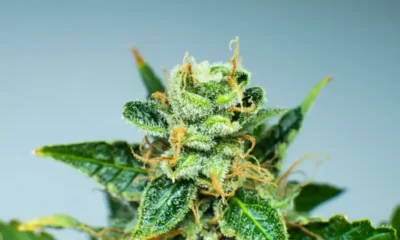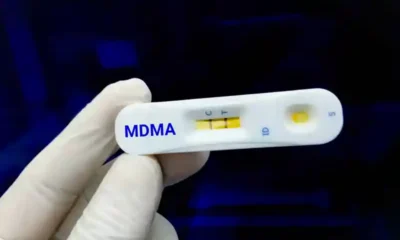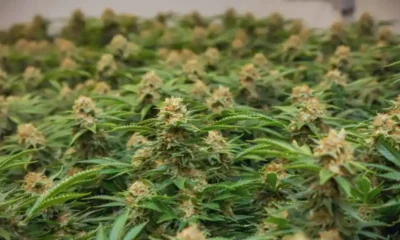Connect with us
Published
2 years agoon

Talks around a cannabis breathalyzer, or really any test that can accurately determine current cannabis intoxication, have been circulating since states first began legalizing cannabis nearly a decade ago. Unlike tests designed for alcohol intoxication, most of the classic methods to test for cannabis only determine whether or not THC is in the bloodstream, not if the person is high at that given moment.
But progress has been steady, and one UCLA chemist and colleagues report they are now a step closer to developing a handheld tool, similar to alcohol breathalyzers, that can detect THC on a person’s breath after smoking, according to a UCLA news release.
UCLA organic chemistry professor Neil Garg and researchers from UCLA startup ElectraTect Inc. describe the process in a paper published in the journal Organic Letters. They describe the process by which THC introduced in a solution into their laboratory-built device can be oxidized. This results in an electric current, the strength of which indicates how much of a psychoactive compound is present, they note.
While this, or similar, technology could be useful in multiple contexts for detecting current impairment, i.e. suspected intoxication at a job where off-the-clock cannabis use is allowed, many lawmakers and leaders are hoping to see this kind of technology perfected as a tool to help make roadways safer and to discourage high driving.
The researchers first developed the chemistry necessary for the technology back in 2020. Garg and UCLA postdoctoral researcher Evan Darzi found that removing a hydrogen molecule from the larger THC molecule made it change color. This is the oxidation process, similar to technology used in alcohol breath analyzers. These devices convert ethanol into an organic chemical compound through the loss of hydrogen.
The oxidation leads to an electric current, which shows the presence and concentration of ethanol in the breath.
Since their 2020 discovery, the UCLA researchers have worked with their patent-pending technology (ElectraTect has exclusively licensed the patent rights) to develop a comparable THC breathalyzer.
Darzi, the CEO of ElectraTex, Garg and ElectraTect researchers detailed in the paper how the developing technology works. As THC comes into contact with a negatively charged electrode, or anode, on one side of the device’s glass chamber, it oxidizes and becomes a new compound: THCQ. This sends electrons across the chamber to a positively charged electrode, or cathode, on the other side, which generates a measurable electric current. The current’s strength depends on the concentration of THC—Basically, the more THC, the stronger the current will be.
The UCLA release notes that this advance marks the first time that THC has been used to power a fuel cell sensor. Once perfected, researchers expect that the technology will be relatively simple and inexpensive, to eventually be scaled up for economical mass production. The team is also currently working to refine the device to detect and measure THC in exhaled breath and to shrink it to a more compact size, for use as a handheld breathalyzer or ignition interlock device (a breathalyzer connected to a vehicle’s ignition that won’t start with the detection of a substance, in this case THC).
Perfecting the technology would be a major win for roadway safety, researchers said, as current tests are difficult to administer on the spot and don’t necessarily work to identify impaired drivers. Because of this, folks can often be at risk for fines, imprisonment and/or termination of employment, even if the individual wasn’t actually high at the time of testing.
Researchers nodded to these realities to highlight the need for this technology, even though it could still be several years off. While there are still questions here (i.e., what happens if someone is intoxicated from a cannabis edible?), the new technology has been a long time coming, ensuring a more just system for cannabis users behind the wheel.


Congressional Progressive Caucus Says Dems Can Legalize MJ By Winning House, Senate Majorities This November


Cannabis Industry Has 440,000 Full-Time Workers


Federal Register Proposes Adding Fentanyl, Removing MDMA From Drug Testing Panels


Feds File Charges Against Maine Weed Grower After Probe Spanning 20 States


The Cannabis Market Is Booming in Japan


German Authorities to Ban Cannabis Smoking, Vaping at Festivals Including Oktoberfest
